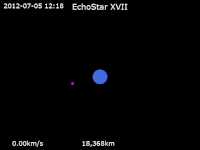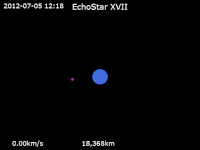
Back Геапераходная арбіта Byelorussian Геостационарна трансферна орбита Bulgarian Přechodová dráha ke geostacionární dráze Czech Geostationäre Transferbahn German Orbito de geosinkrona transiro Esperanto Órbita de transferencia geoestacionaria Spanish مدار انتقالی زمینایستا Persian Geostationaarinen siirtorata Finnish Orbite de transfert géostationnaire French מסלול מעבר למסלול גאוסטציונרי HE
This article has multiple issues. Please help improve it or discuss these issues on the talk page. (Learn how and when to remove these messages)
|
In space mission design, a geostationary transfer orbit (GTO) or geosynchronous transfer orbit is a highly elliptical type of geocentric orbit, usually with a perigee as low as low Earth orbit (LEO) and an apogee as high as geostationary orbit (GEO). Satellites that are destined for geosynchronous orbit (GSO) or GEO are often put into a GTO as an intermediate step for reaching their final orbit.[1] Manufacturers of launch vehicles often advertise the amount of payload the vehicle can put into GTO.[2]

